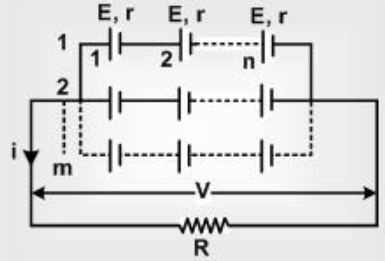Cell and Battery are fundamental components of modern electrical systems, powering everything from small electronic devices to large industrial machines. This article explores the key concepts of cells and batteries, including their types, differences, and practical applications. We will also delve into the distinctions between primary and secondary cells, the characteristics of ideal cell, and the importance of depolarizers in battery operation. By understanding these basics, you can gain a deeper insight into how these essential devices contribute to the functionality of various electrical circuits.
What is Cell and Battery?
Cell: An electric cell is a device used to generate electricity. It is a single unit that converts chemical energy into electrical energy, producing DC voltage.
Each cell has two terminals, one positive and one negative. The positive terminal is indicated by a long line and the negative terminal by a short line. Below is an illustration:

Battery: A battery is a combination of multiple electric cells connected together to increase or decrease current or to change voltage in an electric circuit.

What are Primary and Secondary Cell?
Primary Cell: A primary cell is one that generates electrical current through a chemical reaction and cannot be recharged once it is discharged. Primary cells are of two types: 1) Single-liquid cells, 2) Double-liquid cells.
Single-liquid Cell: A single-liquid cell is an electric cell that contains only one active liquid substance or electrode. Examples include dry cells (used in TV remotes and various devices), bichromate cells, and Leclanché cells.
Secondary Cell: A secondary cell, also known as a storage cell, generates electrical current through a chemical reaction and can be recharged after being discharged. Examples include lead-acid cells, nickel-cadmium alkaline cells, etc.
What are the Differences Between Cell and Battery?
Cell
- A cell is an individual unit.
- The internal resistance of a cell cannot be changed by external electrical connections.
- It is not possible to obtain a voltage higher than the rated value from a cell.
Battery
- A battery consists of multiple cell.
- The effective resistance of a battery can be adjusted by external electrical connections.
- The voltage can be increased or decreased as required.
What is an Ideal Cell?
An ideal cell is one whose EMF (Electromotive Force) remains constant at all times and is used to compare the EMF of other cells.
For example, we know that a common cell cannot supply electricity at a constant rate for an extended period. This is because their EMF gradually decreases with prolonged use.
However, in laboratories, it is necessary to use cells that do not experience a decrease in EMF for conducting electrical experiments. Such cells are known as ideal cells. They are primarily used for comparison with the EMF of other standard cells.
Common Differences Between Dry Cell and Wet Cell

Dry Cell
- Paste is used instead of a liquid electrode.
- The container of the dry cell acts as the negative electrode.
- Electrodes and water cannot be added to reuse the dry cell.
- It is small, lightweight, and can be placed in any position.
- If not used, it gets damaged over time.
Wet Cell
- Liquid electrodes are used.
- Electrodes are placed inside the container.
- Electrolyte and water can be added to extend its use for a long time.
- It is large, heavy, and cannot be placed in any position.
- If not used, it does not get damaged.
What is a Depolarizer? Why is Depolarization Used and How Can it Be Removed?
Depolarizer: A depolarizer is a rod used in primary cell (except for common cell) to neutralize the hydrogen that flows from the negative electrode to the positive electrode.
Manganese dioxide is commonly used as a depolarizer. Chromic acid, nitric acid, etc., are also used.
Generally, depolarization can be removed by three methods:
- Mechanical method
- Electrochemical method
- Chemical method
What is the difference between a cell and a battery?
A cell is a single unit that converts chemical energy into electrical energy, while a battery is a combination of multiple cells connected together to increase voltage or current.
What are the primary and secondary cells?
Primary cells are single-use cells that cannot be recharged after depletion, such as dry cells. Secondary cells, like lead-acid battery, can be recharged and used multiple times.
What is the purpose of a depolarizer in a cell?
A depolarizer is used to neutralize hydrogen that flows from the negative to the positive electrode in a cell, preventing polarization and ensuring efficient operation.
How do dry cells differ from wet cells?
Dry cells use a paste instead of a liquid electrolyte and are smaller, lighter, and more portable. Wet cells use a liquid electrolyte and are typically larger and heavier.
What is an ideal cell, and how is it used?
An ideal cell maintains a constant EMF (electromotive force) and is used primarily for comparison purposes in laboratories rather than for regular power supply.



